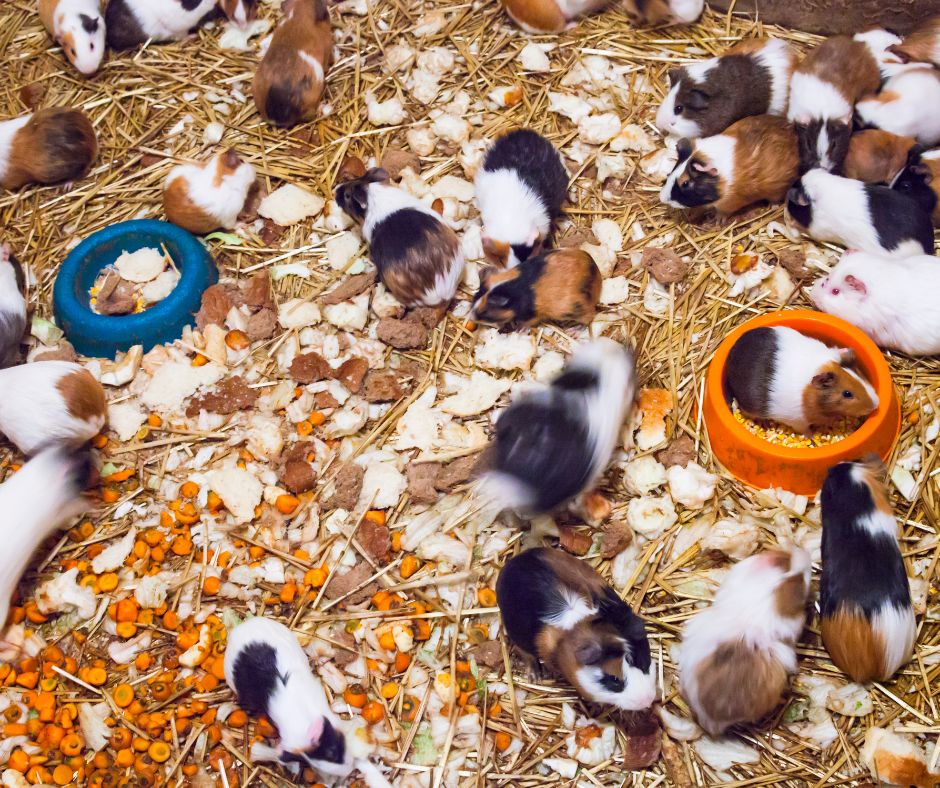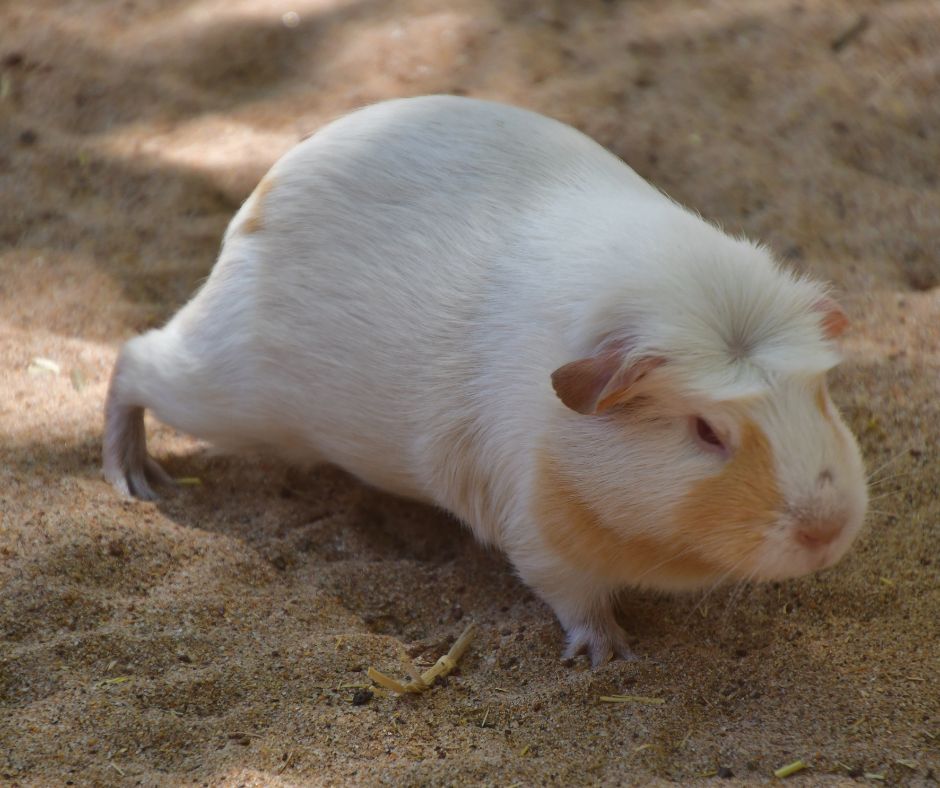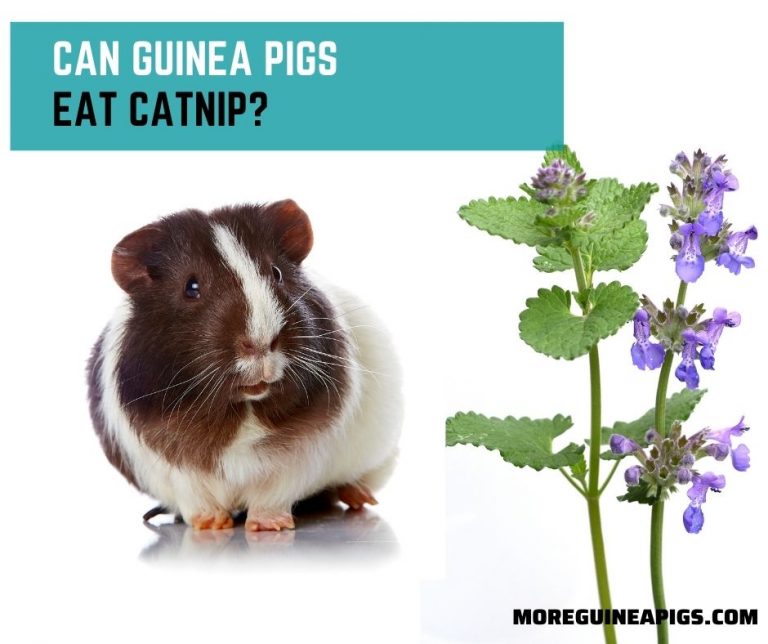Step-By-Step Guide for Guinea Pig Boar Cleaning
A clean guinea pig is a healthy guinea pig; as an owner of a guinea pig, whether a boar or sow, you are obliged to practice routine cleaning for your pet.
Practicing hygiene is part of essential care in all pets, including guinea pigs. Your pet may be well-fed, but you increase its vulnerability to illnesses and infections if you skip that part of cleaning them up.
Poor hygiene is the main reason why a guinea pig will emit a foul smell. If your pig smells terrible, your nose isn’t playing a trick on you; it’s frankly telling you something is wrong.
Some people find cleaning a boar’s privates unpleasant, but this is a crucial routine management practice in all-male piggies.
I’m here to share with you a step-by-step guide for guinea pig boar cleaning. You will see why it’s important and how often to do it.
Is Guinea Pig Boar Cleaning Necessary?
The idea of guinea pig boars not being clean makes them produce noticeable odors that any person will want to keep back from them.
Many reasons will make you want to clean your piggy, and yes, it’s necessary to clean your guinea pig boar, including its genitals (penis, testicles, and perineal sac).
Boars or male guinea pigs have a reputation of being “dirtier: between their secretions and body odor than females. That’s why you should regularly clean your boar to keep it happy, healthy, and comfortable in its body.
Do neutered and fertile guinea pigs need the same clean-out? No, neutered/castrated boars don’t have their testicles anymore. They also lack a large anal sac and don’t frequently need a clean-out.
Also read: What Is A Boar Guinea Pig?

Step-By-Step Guide for Guinea Pig Boar Cleaning
Guinea pigs have a distinctive opening just above their anal region (also at the end of their spine) called smegma.
The gland secretes a thick and waxy emission for territory marking and scenting purposes.
These secretions accumulate and build up around a boar’s grease gland, producing an irritating smell. Now you see one cause why male piggies emit unpleasant odors to your nose.
Moreover, boar cleaning is about cleaning their grease gland and checking their genitals and bums.
Guinea pig boar cleaning is actually easy, and you can do it when you know-how. You only need to have the right tools, including coconut or olive oil and Q-tips or cotton wool. Also, ensure your hands are clean or use disposable gloves.
Genitals (Bits and Pieces) Cleaning
Male guinea pigs have huge testicles held within a bulging scrotal sac and are positioned alongside the anus and penis unit.
The size and lateral positioning of the testicles make the entire genitalia of boars appear to bulge outwards. It’s a normal appearance with any healthy male guinea pig.
If you feel the testicles with your fingers, they should be free from lumps or swellings. That’s a sign that the pig is healthy.
How to Find a Boar’s Penis
You shouldn’t handle your little friend roughly when examining its genitalia. The best restraining method is resting the cavy on its back on a towel and holding it firmly with your hand.
To find the penis, gently press the pelvic area (section just about the genital area) with your finger, and it will be extruded in the form of an “i” shape. The penis usually sits 2-3 inches above the anus.
Cleaning a boar’s genitalia is necessary to remove smegma, dirt, shavings, hair, grass, bedding, and hay from the penis.
Smegma is a thick, white, and creamy secretion that accumulates under the penis’s foreskin when you don’t clean your piggy’s genitalia well enough. Smegma shouldn’t be left to accumulate or particularly become smelly.
Likewise, cleaning helps to remove dirt from shafts that would otherwise become clogged and obstruct blood circulation.

How to Clean a Male Guinea Pig’s Penis?
The penis and its foreskin must always be clean and free of debris, e.g., hair, hay, grass, etc. You can clean the pig’s penis using cotton wool, baby wipes, or Q-tips.
Olive oil is ideal for wetting the material you use for wiping. Additionally, hand-warm water dissolved in a pretty gentle guinea pig shampoo is good to use.
Remove any dirt you spot on the penis, gently wipe the area around and the penis itself with a wet material.
Penis Problems to Look Out for?
Ensure that the shaft doesn’t have anything foreign, e.g., a hair loop, to prevent blockage. A blocked shaft interferes with blood flow.
Where blood circulation is compromised, the penis manifests a strange blueish color. Such appearances warn you to see a vet right away.
Bear in mind that the penis is typically covered in smegma; it acts as a natural substance for moistening purposes.
However, if left to build up in the foreskin, this creamy substance starts to smell and may eventually become a breeding ground for bacteria. Other problems associated with the boar penis includes;
Cauliflower Willy
Cauliflower willy describes a condition where the boar’s foreskin isn’t as tidy; it looks frilly and hangs out, contrary to a normal willy.
The male piggy’s bums are close to the ground, plus these animals constantly drag their bums on surfaces when scent marking. The skin draws up the debris that can injure, infect, or irritate the willy (penis).
The penis needs to be cleaned as much as possible and lubricated to avoid health risks and causing uncomfort to the pig.
Boar Glue and Sperm Rods
Sperm rods comprise dried semen fluid inside the penis shaft, which then protrude from the outer part of the penis.
Caretakers can successfully remove small sperm rods, but large sperm rods should be vet checked. These large sperm rods are painful to remove and make guinea pigs lose appetite.
On the other hand, boar glue is ejaculated semen fluid that is usually sticky and dries solid. You can notice blobs of boar glue on the male’s or its companion’s nose or stuck to the fur.
Removing a wet boar glue is possible through washing, but the best solution can be to cut the offending lump with scissors if left to dry.
Prolapsed Penis
Prolapsed penis explains a condition where the penis fails to retract correctly and ends up hanging out permanently.
The problem can right itself, but it requires to be vet checked in some situations. The vet will stitch back the penis to avoid the risks of injuries and infections.
Bums Cleaning
Male guinea pigs often drag their bums across the floor when marking their territory and showing dominance. Eventually, debris accumulates on this part and requires you to clean it out.
However, not all males manifest dirty bums; most express a very neat anal sac. But if your pet is dirty, make efforts to clean it.
How to Keep the Anal Sac Clean
Do you see any foreign material on the rear end of your guinea pig? Don’t hesitate to clean the pig if you observe them. So, how do you do it?
Bear in mind to check your little friend’s anal sac more frequently. Gently remove any available debris during cleaning, and clean the sac with an unscented baby wipe or cotton wool dissolved in hand-warm water.
Bums Problems to Look Out For?
Impaction is a potentially fatal condition that affects some older guinea pigs and those with medical conditions.
The muscles holding the anus tight become a bit loose as guinea pigs age and affect their capacity to pass the bowel movement.
Eventually, poop may end up collecting inside the perianal sac and form an ever-growing ball, and make the pig susceptible to other health complications. Now you see why it’s all-important to check your pig’s genital areas frequently.
If you suspect your little cavy is impacted, gently massage the anus, and you should see poop coming out. Clean the pocket with a cotton swab.

Grease Gland Cleaning
Although grease glands are present in sows and boars, they are more active in males. And for this reason, boars can produce excess grease gland secretion.
Grease is not something to startle the pet owners; you only need to clean the pig if its hair is greasy or when the glands appear crusty.
Something important to remember is that although the grease gland secretion irritates you, it’s part of a guinea pig identity. They use this to mark territory and express dominance; hence, cleaning it often can break the pigs’ hierarchy and bonding.
It’s always a good idea to trim butt hair from long-haired piggies since excess grease tends to clog them together, making grooming difficult.
How to Find Grease Gland?
To locate a grease gland in your cavy successfully, position the pig on a flat surface and slide your finger down its spine. The fur on the gland feels slightly tacky, and the surrounding hair tends to be black and sticky.
How to Clean the Grease Gland
You want your guinea pig to always have a clean grease gland. Organic coconut oil is effective in degreasing piggy’s hair. Other essentials to use are Swarfega and washing-up liquids.
But use the latter only when you can’t find coconut oil or Swarfega since it makes the skin extremely dry.
Moreover, Swarfega works best on dry skin/hair; therefore, you should apply it a few minutes prior to bathing your friend.
When it comes to grease gland cleaning, you want something safe for the pig and, at the same time, can disperse grease/fats.
Grease gland problems to look out for?
Signs of abnormal or unhealthy grease glands include redness, soreness, and swollenness. These signs are warning signs that your little friend may be infected.
Moreover, any growth that appears on the grease gland and doesn’t come off following a gentle cleaning needs a vet intervention. If it’s a tumor (very uncommon), the vet may recommend an operation.
Organic Coconut Oil, Cold-Pressed
How Often Should You Clean a Male Guinea Pig?
You do not need to clean your male guinea pig every day. In general, guinea pigs only bathe countable times within a year. But since most males are a bit mucky, they may require to be bathed more often.
For instance, bum bathing can happen as frequently as needed, depending on how messy your boar is.
You only need to give a bum area a quick water wash to remove any boar messes. Boars are incredible territorial cavies, and they will often produce grease to mark territory or show dominance when living with a cagemate.
Eventually, they can become quite dirty, making it imperative to perform grease cleaning regularly. Cleaning the pig 1-2 times a month would be reasonable.
Also read: How To Bathe a Guinea Pig?

Baby Cotton Swabs, Paper Sticks Cotton Buds
Conclusion
Grease is an essential substance that guinea pigs use for scent marking and showing dominance. The males produce more of this secretion than females and sometimes can build up around the grease gland and start smelling.
Furthermore, leaving the boar genital areas uncleaned for a long time allows smegma to accumulate, and it can start smelling. These reasons explain why guinea pig boar cleaning should be a regular activity.
The top key goal for a caretaker should be to keep their boars clean; keeping these animals dirty exposes them to infections.
Yes, guinea pigs are good self-groomers, but you should rely on them to manage to keep themselves clean entirely.
Check for your piggy’s genital area and the condition of its grease gland regularly to ensure everything is okay.







